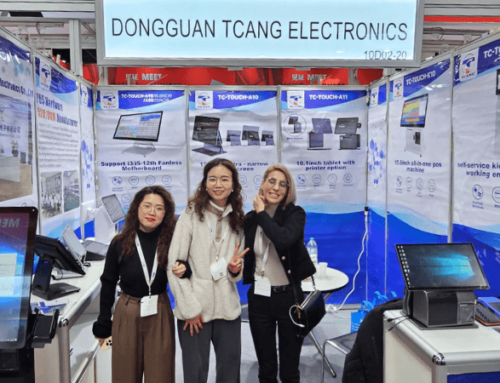Today, touch displays can be found in a variety of handheld consumer electronic devices, medical applications, vending/ticketing/ATM machines, point of sale (POS) terminals, industrial and process control equipment. Touch screen displays are making their way into office automation, automotive and marine instrumentation, home appliance and game console applications, and many electronic scales are now using touch technology.

Various factors influence the choice of touch screen technology
Touch screens can be implemented in a variety of ways. In addition to cost, the choice of technology depends on several factors.
Performance: Performance includes such things as speed, sensitivity, accuracy, resolution, drag, Z-axis, dual/multi-touch methods, parallax angle and stability of calibration.
Input flexibility: Input flexibility parameters affect the way human-computer interaction, such as gloves, glove material, nails, stylus, handwriting recognition and obtaining a signature.
Environmental: Environmental factors are temperature, humidity, chemical resistance, scratch resistance, splash/drop resistance, height, in-vehicle mounting, shock, vibration, fracture resistance and breakage security.
Electrical and mechanical properties: Electrical and mechanical properties need to cover power, floating ground, electrostatic discharge (ESD), electromagnetic interference (EMI), size, curvature, etc.
Optics: Optical properties that affect technology selection include light transmission, clarity, color purity and reflection
Types of touch screen technology
According to the various factors described above, the main touch screen technology can be divided into the following types.
Resistive: from the current promotion of applications, resistive touch screen is the dominant touch technology. It consists of a glass panel, iridium tin oxide (ITO) resistive coating with a conductive coating shield with a silver general line along the edge. The two layers are separated by insulating dots. When the screen is touched, the escutcheon bends to come into contact with the coated film on the glass

The controller optionally drives the glass layer and the 5 V shield and reads the voltage generated from the shield and the glass layer, determining the X and Y coordinates based on the voltage drop in the layer being measured. The technology requires four lines – the total lines mentioned earlier, which is known as 4-wire resistive touch screen technology.
There are tiny cracks in the ITO coating due to the constant bending of the escutcheon. This can make the linearity and accuracy of the 4-wire resistive touch screen technology poor, and environmental changes can cause drift in accuracy. These effects have been eliminated with the ever-improving 5, 6, 7 and 8-wire resistive touchscreens.
Acoustic Pulse Recognition (APR) style: The APR consists of a glass display coated or otherwise rigid substrate with four piezoelectric sensors mounted on the back. The sensors are mounted on two opposite corners of the visible area and are connected to the control card via a curved cable. When the user touches the screen, a collision or friction occurs between the finger or stylus and the dragging of the glass, and an acoustic wave is generated. The wave radiation leaves the contact point and travels to the sensor, generating electrical signals in proportion to the sound waves. These signals are amplified in the control card and then converted to a digital data stream. The APR is designed to eliminate environmental influences and external sounds that do not match the stored sound list.Surface Acoustic Wave (SAW) style: The SAW touch screen is coated with glass that has transmit and receive piezoelectric sensors for the X and Y axes. The controller sends an electrical signal to the transmitting sensor and converts the signal into ultrasonic waves within the surface of the glass. Through an array of reflectors, these waves cover the entire touch screen. The reflectors on the opposite side collect and control these waves to the receiving sensors, converting them into electrical signals. This process is repeated for each axis. The user absorbs a portion of the propagating waves when touched. The received signals corresponding to the X and Y coordinates are compared with a stored digital distribution to identify the changes and calculate the coordinates.
Capacitive: Capacitive touch screen technology can be further subdivided into surface capacitive and projected capacitive. Surface capacitive technology is a glass panel coated with identical conductors. Electrodes around the edges of the panel distribute low voltage equally throughout the conductive layer, creating an identical electric field. A current is then drawn from each corner when touched. The controller measures the ratio of currents received from each corner to calculate the position of the touch.
Projected capacitive touch screens consist of a grid of microscopic lines of sensors between two protective layers of glass. Components can be placed behind user-installed materials, including storm-proof, 18 mm thick glass. When touched, a capacitance is formed between the finger and the sensor. The touch position can be calculated from the electrical characteristics of the altered sensor grid.
Infrared/Optical: High-resolution infrared (IR) technology uses a small frame around the display with surface-mounted LEDs and photoreceptors on opposite sides, with an infrared transparent bezel hidden behind. The controller continuously sends LEDs as a way to build a grid of infrared light scans. Touch then blocks one or more beams of IR light on each axis, so that the corresponding X, Y coordinates can be determined.






Leave A Comment